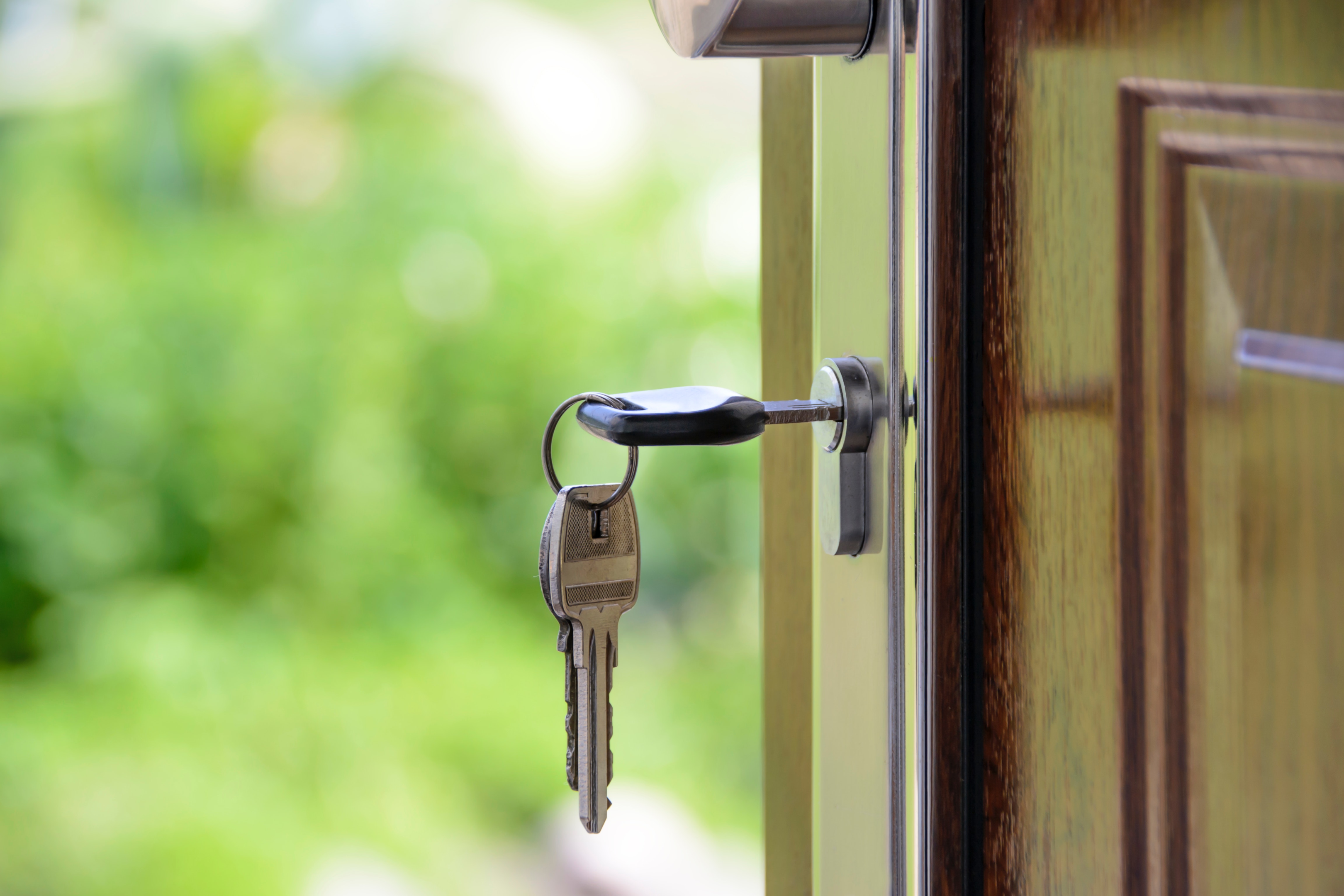BLOGS
A Guide To Home Buying
It is a widely known fact that buying a real estate property, may it be for a family home or any other purpose, is not easy. The main hurdle is, of course, the money needed to buy a house. So, getting to a point in life when buying a home is already being considered is admirable, especially if it came from someone’s hard labor after many years.
Even with sufficient funds to begin the process, many people are intimidated to embark on the journey of homeownership due to the complexities and long-term commitment involved. As a result of this attitude toward homeownership, aspiring homeowners are forced to rent their primary residence while real estate values continue to appreciate over time.

While there is some truth in the idea that home buying is a complicated process, there is nothing too hard for someone persistent and patient to achieve their goals. For the past two years, most industries have experienced losses, including the resilient real estate market.
Although, soon after, there came an industry trend wherein people became more interested in home buying. The pandemic taught the world the value of having their own space. And with the continuous rise of digitization in different business sectors, the home buying process is becoming easier thanks to technology.
This article is perfect for those who want to jumpstart their journey towards finally owning a place to call home—this will serve as a home buying guide for aspiring homeowners.
Important Questions To Ask Before Buying a Home

Before starting the journey to buying a home and skimming through many homes buy guides available on the internet, certain questions need to be answered first to ensure that the buyer is ready to buy a house.
Many important things need to be identified and reviewed, such as the objectives of the purchase, one’s financial ability, and the needs and preferences for the property to be purchased. Having all these laid out in the open will help buyers stay on track with their goals and means to purchase a property.
1. What is the house for?
The first question asked is, “What is the house for?” There are many possible answers to this question. It can be used as a residential property for the family’s primary dwelling. It can also be a secondary home, like a vacation home, that received a huge demand during the pandemic. Finally, it can also be an investment to be listed for staycations or rented out to other families.
Whatever the objective of the purchase is, it needs to be established first to ensure that the next decisions will follow through and be aligned to this.
2. What are your preferred house features?
Homebuyers need to be familiar with various types of residential properties before proceeding with the home buying process. These types include traditional single-family home dwellings, townhouses, condominium units, or multi-family buildings with several units. Choosing any of their own pros and c, one but will heavily depend on the objectives established earlier in this article.

In this part, homebuyers should also start making a list of the features they need to see in the house they will buy and preferences on which they can be flexible. This list should include the size, property location, and layout. Since buying a home is possibly one of the biggest purchases in one’s life, balancing the family’s needs and preferences is important.
3. What can you afford?
Unless the buyer is affluent, the payment to buy a home is usually made through financing with a bank or a financial lender. A serious check-up of one’s financial status is important to be done first before buying a home. Several factors will affect one’s standing for a loan—existing debts, monthly income, and tenure at current job.
If these factors lean more on the negative side, the lender’s loaner might not be that great (with high-interest rates). Practically speaking, the buyer might need to review the decision to buy a home at this point.

On the other hand, if the buyer is confident financially, the next steps would include researching different lenders available and looking for the ones that offer low-interest rates and fees for a mortgage. Again, buying a house is a long-term commitment, so patience is key in each step.
Failing to avoid common home buyers’ mistakes might end up in “house poor” in which people spend the majority of their monthly income on a mortgage. This is not wise and might lead to more poor financial decisions.
4. Do you have money for a down payment?
Even if the buyer is confident about being approved for a loan, it is still important to note that most real estate developers or even private owners require a percentage of the purchase price as a down payment. This needs to be settled first before proceeding with the home loan with the lender.

Depending on the developer or owner of the property, the down payment can be paid upfront or through installments. The percentage needed for the down payment also varies, usually ranging from ten to twenty percent of the total property price.
5. How will you proceed?
There are many processes and legal documents involved in home buying. This is why working with a real estate agent will be a huge help for the buyer. First, looking for the perfect home according to one’s needs and preferences will require doing a lot of site visits.
These professionals can also negotiate the total property price, make an offer with the seller, process the loan, checking the paperwork. Having a trusted partner with expertise in the real estate market can save home buyers lots of trouble as they go through the entire buying process.
Step-by-Step Home Buying Guide
If you reach this part of this home buyers guide, all the important factors that will affect the home buying process have already been considered. Now, it is time to kick off the journey! Below is a step-by-step guide to the tasks you will go through becoming an official homeowner.
1. Look for a home in your desired location.

Whitman houses and many properties are for sale in the real estate market, and it might be challenging to find a suitable place in the buyer’s desired location. Sohe ways to look for a property to bare is through a frequent search of listings online, driving around the preferred community, or asking for a lead from family and friends.
The ones mentioned above are options that work, but as previously mentioned, the best way for homebuyers to find some of the best places out in the market is by working with a real estate agent. Aside from the connections of these professionals, entrusting the buying process to the experts will get rid of possible oversight, especially on the paperwork.
There are also foreclosed properties offered by banks and other financial lenders for those on a budget. These offers are usually available on their websites so that people can check online. Since house flipping has become a trend in recent years, this can be another possible route if the buyer is willing to do the work once the property has been finally acquired.
2. Secure the finances.

Once you have found the house that suits the needs and preferences listed in your checklist, it is time to prepare the down payment for the house. Some developers ask for a reservation fee to secure the buyer’s slot, and then the down payment can be paid on an installment basis.
However, an upfront payment usually ranges from ten to twenty percent of the total property price. The percentage of the paid down payment is also one of the factors being considered by the lender when approving a home loan.
After settling the down payment, it is time to go through an in-depth search for a bank or financial lender to partner with for a mortgage. Generally, lenders base the home loan approval upon checking if the monthly payment, including the principal, interest, taxes, and insurance, is less than 30% of the buyer’s monthly income.

If it is bigger than the said percentage, the lower chances of approval or receiving a good deal; if it is lower than the said percentage, there is a higher chance of approval with lower interest rates.
When searching for a mortgage, the key is to shop around for as many options as possible. Hear as many offers as possible and compare them with each other. Ask many questions and do not accept the loan offers right away.
The loan will take many years to finish paying, so it is better to wait and choose the best offer available. And aside from the purchase price, buying a house also comes with other regular fees like property taxes and homeowners’ insurance. Consider these additional fees that will be added to the monthly payments.
3. Prepare the paperwork.

For private-owned property, the next step after settling the down payment is to make an offer of the purchase price. Your real estate agent should help make an offer, along with other conditions like waiving other processing fees.
Your real estate agent will then present the offer to the seller that they can either accept or issue a counteroffer. Once there is an agreement, you will be able to proceed in applying for a mortgage already.
As for established real estate developers, the property price is usually final, and homebuyers cannot make an offer anymore. If this is the case, the buyer can already proceed with the loan application after settling the down payment.

Once a lender has been chosen, it is time to do the paperwork and submission of financial documents. In this part of the process, you will need the expertise and guidance of your real estate agent.
Aside from the bank forms to fill out, certain documents are to be submitted so the lender can verify the buyer’s income status. This process includes verification of employment, checking credit scores, calculating the debt-to-income ratio, etc. Make sure to provide complete and correct information to the lender as it may affect the approval process.
4. Inspect the property.

When the loan has been approved and the house is ready for turnover, the next step is to do a home inspection. While there are tons of resources on the internet about the things to check during a home inspection, it is still better to hire a trained professional to do this part.
A home inspection includes the external look of the house and the quality, safety, and overall condition.
If there are issues with the property coming from the home inspection, they must be mentioned to the seller and have them fixed before accepting the key to the house. If the seller refuses to cover the fixes needed, there is still a chance to negotiate or move on to another property.
5. Close the deal.

Closing the deal means that all the previous steps have gone well and that you accept the house in its present condition. Once this has been established, signing tons of paperwork and settling closing costs come next.
Once again, this requires assistance from the real estate agent to ensure there will be no oversight as it may cause legal repercussions.
The processing of the turnover may take a while, but the process is pretty much done unless there is a fallthrough with the documents.
6. Prepare the house for move-in.

Now that the papers have been signed, is it finally time to move in? Not yet! Before finally moving into the new house, there are surely final touches that are needed to be done so the future residents will be comfortable in their new home.
During the pandemic, do-it-yourself home improvements or interior decorating became a trend. Numerous resources are available to assist homeowners in customizing their own spaces.
7. Move into your home!

After the long process of buying a house, it is now time to move in! But what comes next after the move? Are there other things needed to be remembered?
The landlord is typically responsible for property maintenance for those who previously rented before purchasing a home. Bear in mind that you, as a first-time homeowner, are responsible for routine maintenance.
Due to the fact that homeownership entails unexpected expenses, it is prudent to establish an emergency fund for maintenance and emergency repairs to managing these costs once they occur.
Summary
This home buying guide might not be as expensive, but it should be enough to help aspiring homeowners understand the entire process. The more home buyers do research and prepare for the property they want to purchase, the better deals and the smoother the process will be.
Be a Brittany Homeowner!

If this home buying guide still looks complicated and intimidating, Brittany Salesforce will walk you through a more in-depth discussion about the process of purchasing your own luxury home.
Brittany Corporation—the top luxury real estate developer in the Philippines—has the best people to help aspiring homebuyers in their journey when it comes to luxury real estate. Reading a home buying guide is recommended, but choosing the best partner for the job is more significant.
Brittany Corporation offers world-class condos and houses in the Philippines, where homeowners can experience luxury living every day. Brittany’s luxury real estate developments are situated in excellent locations (Tagaytay, Santa Rosa, Alabang, and Sucat) nestled in themed communities designed with inspiration from world-class, international travel destinations.
Next Read: Second Home: Why People Still Look It



























